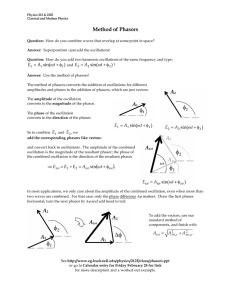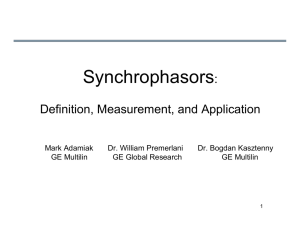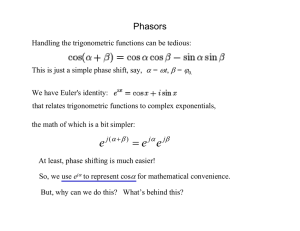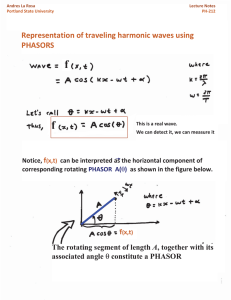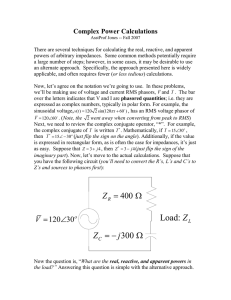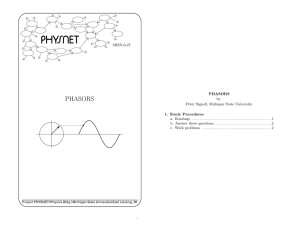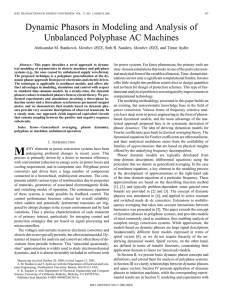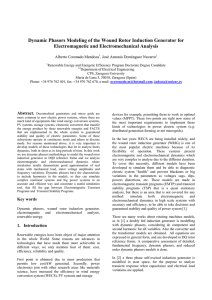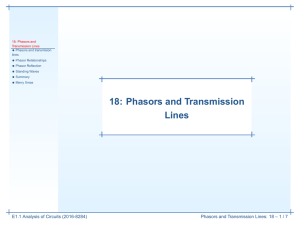Phasor Multiplication and Division
advertisement
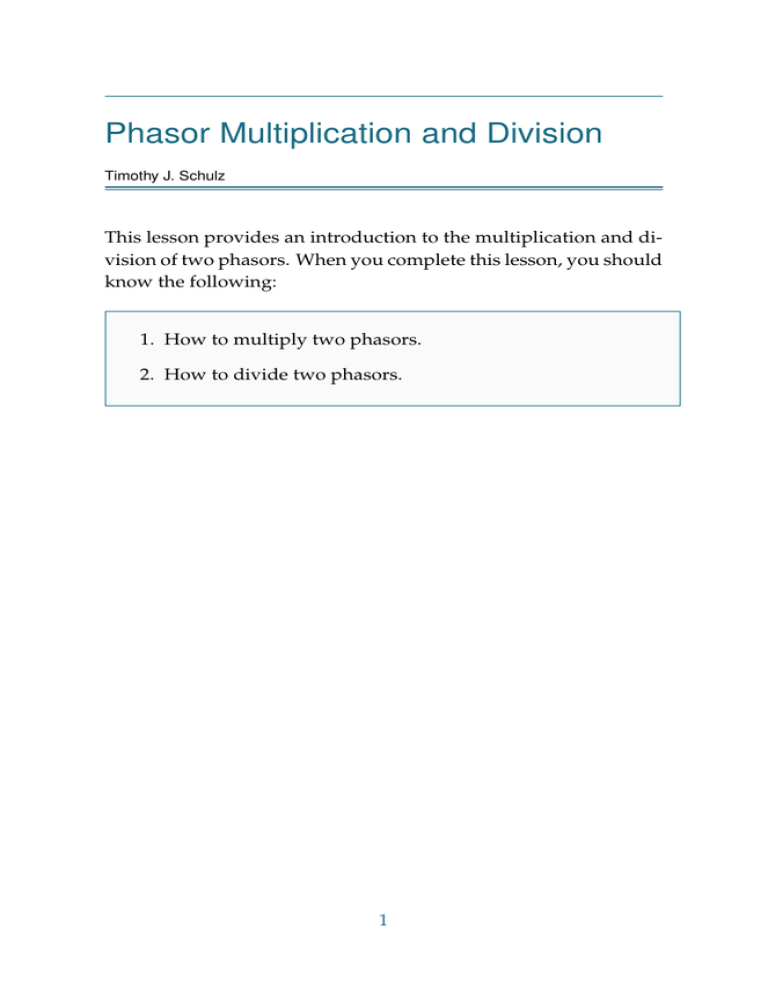
Phasor Multiplication and Division Timothy J. Schulz This lesson provides an introduction to the multiplication and division of two phasors. When you complete this lesson, you should know the following: 1. How to multiply two phasors. 2. How to divide two phasors. 1 c Timothy J. Schulz Phasor Multiplication and Division Multiplication of Phasors When we multiply two phasors, the result is a phasor whose amplitude is the product of the amplitudes, and whose phase is the sum of the phases. For example, suppose we want to multiply the following phasors: I = 10 30◦ , and Z = 2 − j2. To do this, we first note that the phasor Z is equal to Z= √ 8 −45◦ . The result of the product V = IZ, then, is a phasor whose amplitude is equal to amplitude(V ) = amplitude(I) × amplitude(Z) √ (10)( 8) = 28.2843, = and whose phase is equal to phase(V ) = phase(I) + phase(Z) = 30◦ − 45◦ = −15◦ . Therefore, the product of the two phasors is V = IZ = 28.2843 −15◦ . 2 c Timothy J. Schulz Phasor Multiplication and Division Multiplication of Phasors When we divide two phasors, the result is a phasor whose amplitude is the ratio of the amplitudes, and whose phase is the difference of the phases. For example, suppose we want to divide the following phasors: V = 4 −90◦ , and √ Z = 1 + j 3. To do this, we first note that the phasor Z is equal to Z = 2 60◦ . The result of the division I= V , Z then, is a phasor whose amplitude is amplitude(I) amplitude(V ) amplitude(Z) 4 = 2 = 2, = and whose phase is equal to phase(I) = phase(V ) − phase(Z) = −90◦ − 60◦ = −150◦ . Therefore, the division of the two phasors is I= V = 2 −150◦ . Z 3
